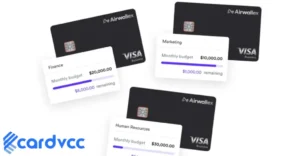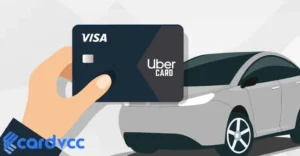Credit card companies charge vendors around 1.5% to 3.5% per transaction. Fees vary based on the card type and vendor agreement.

Credit card processing fees can impact a business’s bottom line significantly. Vendors often face multiple fees, including interchange fees, assessment fees, and processor markup. These costs depend on various factors such as card type, transaction volume, and the industry in which the business operates.
Understanding these charges helps businesses manage expenses better and choose the most cost-effective payment processing solutions. Effective management of credit card fees can lead to increased profitability and smoother financial operations. By negotiating lower rates or selecting the right payment processor, vendors can mitigate the financial impact of these fees.
Introduction To Vendor Fees
Vendors often accept credit card payments. But, they incur costs for this service. These costs are known as vendor fees. Understanding these fees helps vendors manage their expenses better.
Understanding Merchant Fees
Merchant fees are charges vendors pay to credit card companies. These fees cover the costs of processing card payments. They usually include several components:
- Transaction Fees: A percentage of each sale.
- Flat Fees: A fixed fee per transaction.
- Monthly Fees: A charge for account maintenance.
Why Vendors Pay Fees
Vendors pay these fees to accept credit card payments. This process involves several parties:
- Card Networks: Companies like Visa and MasterCard.
- Issuing Banks: Banks that issue credit cards to consumers.
- Payment Processors: Companies that handle transaction data.
Each party charges the vendor for their role. These fees ensure smooth and secure transactions.
Types Of Fees Charged
Understanding the types of fees charged by credit card companies is essential for vendors. These fees can significantly impact your profit margins. Let’s dive into the different fees you might encounter.
Transaction Fees
Transaction fees are charges applied whenever a credit card is used. These fees are usually a percentage of the transaction amount.
| Type of Transaction | Fee Percentage |
|---|---|
| Swiped Card | 1.5% – 2.9% |
| Online Payment | 2.9% – 3.5% |
| Keyed-in Transaction | 3.5% – 4.0% |
These fees are often unavoidable and vary by the type of transaction. Higher fees typically apply for online and keyed-in payments due to increased risk.
Annual Fees
Annual fees are charges that vendors must pay each year. These fees cover the cost of maintaining their credit card processing account.
- Annual fees can range from $50 to $500.
- Some providers waive the first year’s fee.
Pay attention to these fees as they can add up over time. Always check your contract for any hidden fees.
Interchange Fees Explained
Interchange fees are charges that vendors pay for accepting credit cards. These fees are a part of every credit card transaction. Vendors often wonder how much credit card companies charge them. Let’s break it down.
Role Of Banks
Banks play a key role in setting interchange fees. There are two types of banks involved: the issuing bank and the acquiring bank.
- Issuing Bank: This is the bank that gives the credit card to the customer.
- Acquiring Bank: This is the bank that processes the payment for the vendor.
Both banks share the interchange fee. The issuing bank gets a larger portion. This fee helps cover the cost of processing transactions and protecting against fraud.
Impact On Vendors
Interchange fees can impact vendors in many ways. These fees are usually a percentage of the transaction amount. They can vary based on factors like the type of card used.
Here’s an example of how these fees might look:
| Card Type | Interchange Fee |
|---|---|
| Standard Credit Card | 1.5% + $0.10 per transaction |
| Premium Credit Card | 2.0% + $0.10 per transaction |
| Corporate Credit Card | 2.5% + $0.10 per transaction |
These fees can add up quickly, affecting a vendor’s profit margins. Some vendors may adjust their prices to cover these costs. Others may look for alternative payment methods to reduce fees.
Assessment Fees
Assessment fees are charges levied by credit card networks. These fees are essential for processing card transactions. They cover various costs, ensuring secure and efficient payments.
Network Fees
Network fees are a component of assessment fees. These charges are set by card networks like Visa, Mastercard, and American Express. They ensure the smooth operation of the card network infrastructure. Vendors need to pay these fees to accept card payments.
The table below outlines some typical network fees:
| Card Network | Fee Percentage |
|---|---|
| Visa | 0.14% |
| Mastercard | 0.13% |
| American Express | 0.15% |
Fee Calculation
The calculation of assessment fees is straightforward. They are a percentage of the total transaction amount. Vendors should be aware of these fees to manage costs effectively.
Here’s a simple example to understand:
Transaction Amount: $100
Network Fee (Visa): 0.14%
Assessment Fee: $100 0.14% = $0.14
Assessment fees are unavoidable but manageable. Knowing these fees helps vendors plan better.
Markup Fees
Markup fees are extra charges that credit card processors add. These fees are in addition to the base rate set by credit card companies. Vendors must understand these fees to keep costs low.
Processor Markups
Credit card processors add markup fees to cover their services. These fees can be a flat fee or a percentage of each transaction. The amount of the markup fee can vary widely.
Here is a simple breakdown:
| Fee Type | Description | Example Amount |
|---|---|---|
| Flat Fee | A fixed amount per transaction | $0.10 – $0.30 |
| Percentage Fee | A percentage of each transaction | 0.2% – 1% |
Understanding these fees helps vendors plan their budgets better.
Negotiating Markups
Vendors can negotiate lower markup fees with processors. Here are some tips:
- Compare offers from multiple processors.
- Ask for lower rates based on your transaction volume.
- Review your monthly statements for hidden fees.
Using these steps, vendors can save money. Lowering markup fees directly affects the bottom line.
Other Hidden Fees
Credit card companies often charge vendors various fees. These charges can significantly affect a vendor’s revenue. Besides the standard transaction fees, there are several other hidden fees vendors should be aware of.
Chargeback Fees
Chargebacks happen when customers dispute a transaction. Credit card companies then reverse the transaction. This process incurs a chargeback fee for vendors. The fee compensates the card company for the investigation and processing.
Below is a table outlining typical chargeback fees:
| Card Network | Chargeback Fee |
|---|---|
| Visa | $20-$50 |
| Mastercard | $25-$40 |
| American Express | $5-$75 |
High chargeback rates can lead to increased fees. Vendors should aim to minimize chargebacks to save costs.
Statement Fees
Credit card companies provide monthly statements. These statements detail each transaction. Vendors may incur statement fees for this service.
Statement fees can vary. Here’s a typical range:
- Paper Statements: $5-$15 per month
- Electronic Statements: $0-$5 per month
Vendors can opt for electronic statements to reduce costs. Always review statements for accuracy to avoid unnecessary fees.
Factors Influencing Fees
Understanding the factors influencing fees can help vendors manage costs. Credit card companies charge vendors various fees, which depend on several factors. Let’s explore these crucial elements.
Business Type
Different businesses attract different fee structures. For instance, retail shops often have lower fees compared to online stores. This is because online transactions carry higher fraud risk. Credit card companies adjust fees based on such risks.
Transaction Volume
Vendors with higher transaction volumes may receive lower fees. They benefit from economies of scale. Credit card companies offer discounts to high-volume businesses. Small vendors might face higher fees due to lower transaction numbers.
Here’s a simple comparison:
| Business Type | Average Fee Percentage |
|---|---|
| Retail Store | 1.5% – 2.5% |
| Online Store | 2.0% – 3.5% |
| Small Business | 2.5% – 3.0% |
| High-Volume Business | 1.0% – 1.5% |
Understanding these factors can help vendors negotiate better terms. It also helps in making informed decisions on accepting credit cards.

How Virtual Credit Cards Assist in Cyber Scam Prevention
In today’s world, online shopping is very common. However, cyber scams are a big problem. Virtual credit cards can help prevent these scams. In this article, we will explain how virtual credit cards work. We will also discuss their benefits and how they can keep you safe online.
What is a Virtual Credit Card?
A virtual credit card is a digital version of a credit card. It has a unique card number, expiration date, and security code. You can use it for online purchases just like a regular credit card. However, it is not a physical card. You can create and manage virtual credit cards through an online platform or app.
Upsides of Virtual Payment Methods
Virtual payment methods, like virtual credit cards, offer many benefits. Here are some of the key upsides:
- Enhanced Security: Virtual credit cards provide better security than physical cards. They use unique card numbers for each transaction, reducing the risk of fraud.
- Limited Use: You can set spending limits and expiration dates for virtual credit cards. This limits potential losses from unauthorized transactions.
- Privacy Protection: Virtual credit cards keep your real card information hidden. This protects your personal and financial data.
- Easy Management: You can easily create, manage, and delete virtual credit cards. This gives you more control over your online transactions.
How Virtual Credit Cards Prevent Cyber Scams
Virtual credit cards are effective in preventing cyber scams. Here are some ways they help:
Unique Card Numbers
Each virtual credit card has a unique card number. This number is different from your real credit card number. When you use a virtual credit card, the merchant only sees the virtual card number. If the virtual card number is stolen, it cannot be used for other transactions.
Spending Limits
You can set spending limits on virtual credit cards. This means you can control how much money can be spent. If a scammer tries to use the card, they will only be able to spend up to the limit you set. This helps minimize potential losses.
Expiration Dates
Virtual credit cards can have short expiration dates. You can set the card to expire after a single transaction or after a short period. This makes it harder for scammers to use the card for multiple transactions.
Easy Cancellation
If you suspect that your virtual credit card has been compromised, you can easily cancel it. You can then create a new virtual credit card for future transactions. This quick response helps prevent further unauthorized use.
Privacy Protection
When you use a virtual credit card, your real card information is not shared with the merchant. This keeps your personal and financial data safe. Even if the merchant’s system is hacked, your real card information remains secure.
Join Cardvcc & Instantly Create Virtual Credit Cards
Cardvcc is a platform that allows you to create virtual credit cards instantly. It offers a simple and secure way to manage your online payments. Here are some features of Cardvcc:
- Instant Creation: You can create virtual credit cards instantly. This makes it easy to start using them right away.
- Customizable Settings: You can set spending limits and expiration dates for each card. This gives you control over your transactions.
- Enhanced Security: Cardvcc uses advanced security measures to protect your data. Your real card information is never exposed.
- Easy Management: You can easily manage your virtual credit cards through the Cardvcc platform. You can create, edit, and delete cards as needed.
Using Cardvcc, you can enjoy the benefits of virtual credit cards. This will help you stay safe from cyber scams and enjoy peace of mind while shopping online.
Virtual credit cards are a powerful tool in preventing cyber scams. They offer enhanced security, spending limits, expiration dates, and privacy protection. By using platforms like Cardvcc, you can easily create and manage virtual credit cards. This will help you stay safe while shopping online and protect your financial information from scammers.
Stay safe and secure with virtual credit cards and enjoy worry-free online shopping!
Ways To Reduce Fees
Credit card processing fees can add up quickly for vendors. Reducing these fees can significantly impact the bottom line. Here are some effective ways to minimize credit card processing costs.
Choosing The Right Processor
Selecting the right payment processor can save vendors money. Compare different processors to find the best rates and services.
- Look for processors with low transaction fees.
- Check for any hidden charges or annual fees.
- Ensure the processor offers transparent pricing.
Consider a processor that offers interchange-plus pricing. This pricing model is often more cost-effective.
Implementing Best Practices
Following best practices can reduce credit card processing fees. Here are some tips:
- Encourage customers to use debit cards instead of credit cards.
- Process transactions in real time to avoid higher fees.
- Ensure all transactions are swiped or dipped to qualify for lower rates.
Utilize address verification services (AVS). This reduces the risk of fraud and lowers fees.
| Practice | Benefit |
|---|---|
| Real-time processing | Lower transaction fees |
| Swiped or dipped transactions | Qualify for lower rates |
| Use AVS | Reduce fraud risk |
Implementing these practices can help vendors save on credit card processing fees.
Impact On Small Businesses
Credit card fees can be a heavy burden for small businesses. These fees often reduce profit margins. This can limit growth and expansion for many small vendors.
Financial Burden
Small businesses face higher fee percentages compared to larger businesses. The fees can range from 2% to 4% per transaction. This can add up quickly and affect the bottom line.
For example, if a small shop makes $10,000 in credit card sales:
| Fee Percentage | Total Fee |
|---|---|
| 2% | $200 |
| 3% | $300 |
| 4% | $400 |
These fees reduce the overall profit significantly.
Strategies For Mitigation
There are ways to lessen the impact of credit card fees:
- Negotiate with credit card companies for lower rates.
- Encourage customers to use cash or debit cards.
- Set a minimum purchase amount for credit card use.
- Look for cheaper payment processing options.
Using these strategies can help small businesses save money.
Future Trends
The world of credit card processing is rapidly evolving. Vendors must stay updated with these changes to remain competitive. This section highlights future trends in credit card charges for vendors.
Emerging Technologies
Emerging technologies are shaping the future of credit card processing. One significant trend is the rise of contactless payments. These payments offer faster transactions and better security. Vendors can expect lower fees due to increased efficiency.
Another technology on the rise is blockchain. Blockchain can reduce transaction costs by cutting out intermediaries. This means vendors could see lower fees and faster settlements.
Artificial intelligence (AI) is also playing a big role. AI can detect fraud more effectively than traditional methods. This reduces the risk for credit card companies, which could lead to lower fees for vendors.
Regulatory Changes
Regulations are constantly evolving in the credit card industry. Governments are pushing for more transparency in credit card fees. This could result in lower costs for vendors.
Data protection laws are getting stricter. Vendors must ensure they comply with these regulations. Failure to comply can result in hefty fines.
Finally, there are changes in interchange fee regulations. These changes aim to make fees fairer for vendors. Lower interchange fees mean vendors can keep more of their revenue.
| Emerging Technology | Potential Impact on Fees |
|---|---|
| Contactless Payments | Lower fees due to efficiency |
| Blockchain | Reduced transaction costs |
| Artificial Intelligence | Lower fees due to fraud detection |
| Regulation | Potential Impact on Vendors |
|---|---|
| Transparency in Fees | Lower overall costs |
| Data Protection Laws | Compliance costs, but protects data |
| Interchange Fee Regulation | Fairer, lower fees |

Frequently Asked Questions
What Percentage Do Credit Cards Charge Merchants?
Credit card processing fees for merchants typically range from 1. 5% to 3. 5% per transaction. Rates vary by provider and transaction type.
How Much Does A Credit Card Transaction Cost For A Vendor?
Credit card transaction fees for vendors typically range from 1. 5% to 3. 5% per transaction. Fees depend on the card network, merchant account provider, and transaction volume. Vendors may also face additional charges like monthly fees and PCI compliance fees.
How Much Do Card Companies Charge Businesses?
Card companies typically charge businesses 1. 5% to 3. 5% per transaction. Rates vary by industry and card type.
Is It Legal To Charge A 3% Credit Card Fee?
Yes, it’s legal to charge a 3% credit card fee in most states. Check local laws for restrictions.
Conclusion
Understanding credit card fees is crucial for vendors. These charges can impact your profit margins. Always compare different providers. Negotiate better rates to save money. Stay informed about fee structures. This helps in making better financial decisions. Ultimately, managing these costs can enhance your business’s bottom line.
Read More- 6 Best Virtual Credit Card Apps







